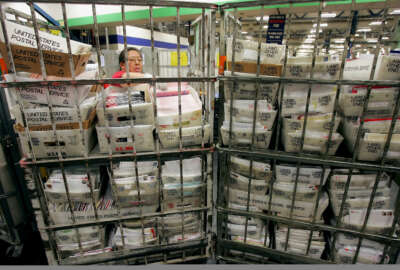
USPS looks to raise first-class stamp price to 63 cents in January 2023
USPS is looking to raise the price of a first-class stamp to 63 cents on Jan. 22, 2023, up from the current price of 60 cents, which went into effect this July.
The Postal Service is looking to raise rates on its market-dominant mail products at the start of next year, citing high inflation and its ongoing long-term financial overhaul as reasons why further price increases are needed.
USPS on Friday said it is looking to raise the price of a first-class stamp to 63 cents on Jan. 22, 2023, up from the current price of 60 cents, which went into effect this July.
The agency said the 4.2% rate increase in first-class mail prices is needed to offset the rise in inflation. The price of a first-class stamp was 50 cents before January 2019.
“As operating expenses continue to rise, these price adjustments provide the Postal Service with much-needed revenue to achieve the financial stability sought by its Delivering for America 10-year plan,” USPS said in a statement Friday. “The prices of the U.S. Postal Service remain among the most affordable in the world.”
Postmaster General Louis DeJoy announced this year that USPS expected to seek another rate hike at the start of 2023, and that the agency would need to continue raising prices on its market-dominant products “at an uncomfortable rate,” until it reaches a point where the agency is on track to be self-sustaining in the long term.
“While our pricing decisions are ultimately made under the authority of the Board of Governors, in the near term, I will most likely be advocating for these increases,” DeJoy said during a May meeting of the USPS Board of Governors. “I believe we have been severely damaged by at least 10 years of a defective pricing model, which cannot be satisfied by one or two annual price increases, especially in this inflationary environment.”
USPS needs approval from its regulator, the Postal Regulatory Commission before the higher prices go into effect, but the commission is expected to approve the changes.
The PRC in December 2020 approved a new rate-setting system that allows USPS to set market-dominant mail prices above the rate of inflation, but still keeps a price cap in place, based in part on changes in mail density and the agency’s contributions to its employees’ retirement.
The proposed price changes have been approved by the USPS Board of Governors.
USPS is introducing a new rate hike roughly six months after its last rate hike, a pattern that may continue for the foreseeable future.
The Postal Service ended the third quarter of fiscal 2022 with $59.7 billion net income, compared to a $3 billion net loss for the same period last year.
However, USPS states the net income is due almost exclusively to the non-cash impact of the Postal Service Reform Act that President Joe Biden signed into law in April.
The long-awaited postal reform bill in April is expected to save USPS $107 billion over the next decade, but USPS is still looking to dig itself out of a “financial hole,” USPS Chief Financial Officer Joe Corbett said in August.
DeJoy told the USPS Board of Governors in August that USPS is starting to see the impact of major reform legislation on its finances, but still expects to raise mail prices again at the start of next year.
DeJoy said the USPS is currently looking at $60-70 billion in losses by 2030, which will “quickly wipe out our $20 billion cash balance, unless we take immediate and substantial action.”
“All stakeholders need to realize that each day lost in executing on our strategy will consume cash and eventually accumulate to a deficit that will necessitate more aggressive actions by us or by the federal government,” DeJoy said in August.
DeJoy said USPS contributions to the retirement health care plan for its employees, under Postal Service Reform Act, will resume in 2026, and will grow to about $6.7 billion a year.
“We will not be able to make these payments unless we timely engage and accomplish all our initiatives, and we are trying to do just that,” DeJoy said
Copyright © 2025 Federal News Network. All rights reserved. This website is not intended for users located within the European Economic Area.
Jory Heckman is a reporter at Federal News Network covering U.S. Postal Service, IRS, big data and technology issues.
Follow @jheckmanWFED
Related Stories





